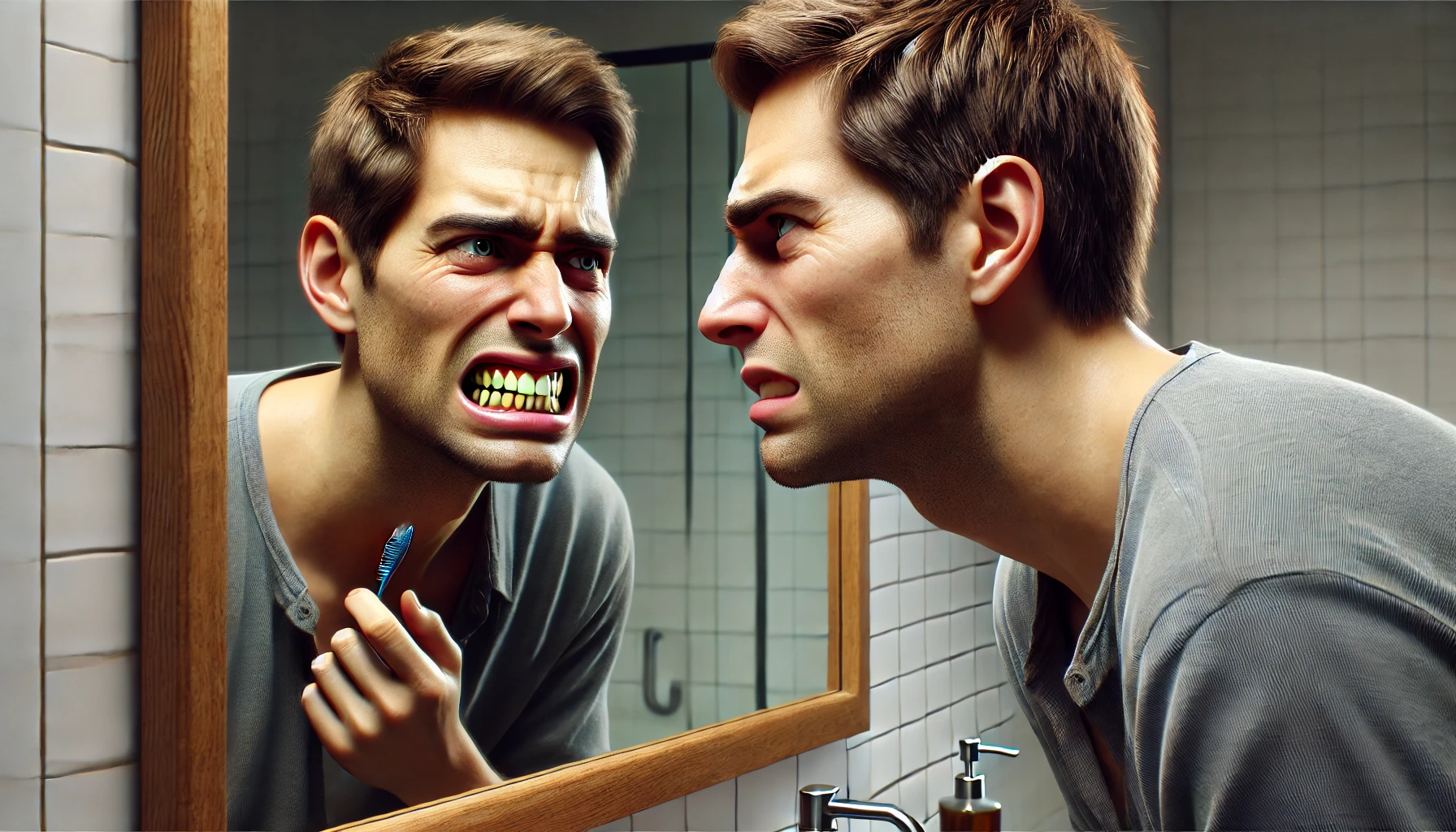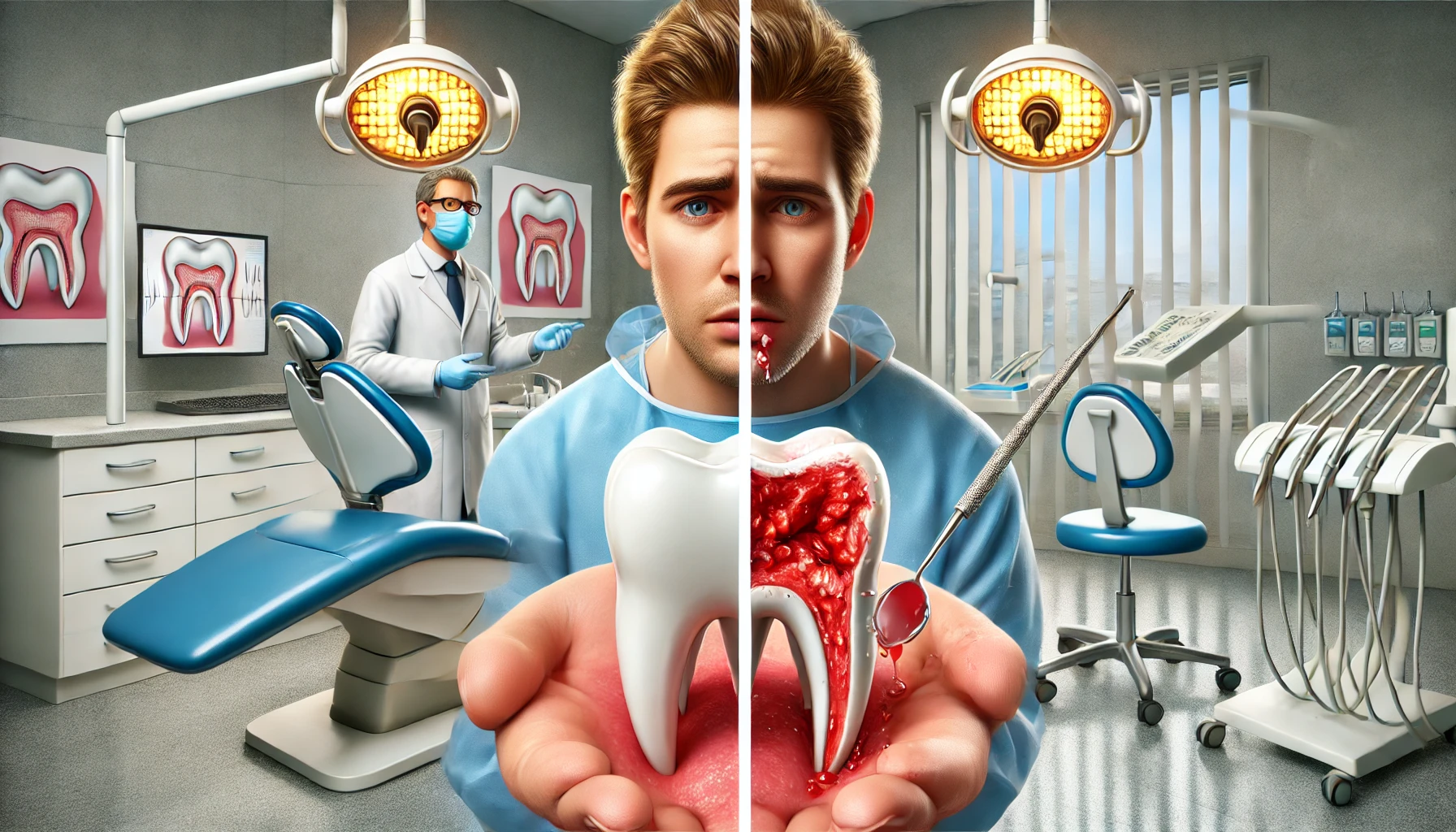
The world of DIY teeth whitening hacks has exploded in popularity, with four in 10 people under 35 having tried teeth whitening treatments. This trend has been fueled by social media, particularly TikTok, where millions of users have engaged with dangerous whitening hacks involving household items like lemons, coconut oil, and even hydrogen peroxide solutions.
However, dental professionals warn that these trendy methods can pose serious risks to oral health, with some potentially causing permanent damage to tooth enamel. Despite the allure of quick fixes, the teeth whitening industry continues to grow, offering safer alternatives that balance effectiveness with dental health considerations. As we navigate this sparkling landscape of pearly white promises, it’s crucial to separate fact from fiction and prioritize long-term oral health over fleeting cosmetic trends.
DIY Teeth Whitening Hacks: What Works And What Doesn’t
Various factors contribute to this issue, ranging from everyday food and beverages to lifestyle choices such as smoking. This article will delve into popular DIY teeth whitening hacks, helping to differentiate between those that genuinely yield results and those that may not be as effective. Additionally, it will address the potential risks associated with at-home treatments and provide guidance on when it is advisable to seek professional assistance. Prepare to discover the secrets to achieving a whiter smile!
Why is Teeth Whitening Popular?
Teeth whitening has become increasingly popular as individuals pursue brighter smiles and enhanced dental aesthetics.
With the rise of social media and a growing focus on personal appearance, many are exploring a variety of whitening methods, both professional and DIY, to address common concerns such as yellowing teeth and stains from food, coffee, and smoking.
This trend is largely driven by the desire for a confident, radiant smile that not only improves overall dental health but also boosts self-esteem.
What Causes Teeth Discoloration?

Tooth discolouration is a widespread issue that many individuals encounter, and it can arise from various factors that affect both the aesthetic appearance and oral health.
The reasons for stains on teeth can include dietary habits, such as the consumption of coffee and acidic foods, lifestyle choices like smoking, and even age-related changes as enamel gradually wears down.
Gaining an understanding of these causes is essential for effective dental care and implementing preventive measures.
1. Food and Drinks
Certain foods and beverages are well-known for their tendency to cause teeth stains, resulting in yellowing and discolouration over time. Drinks such as coffee, tea, red wine, and fizzy drinks contain pigments that can cling to enamel, while acidic foods can erode that precious enamel, making teeth more vulnerable to staining.
To combat the discolouration linked to these dietary choices, maintaining good oral hygiene is essential.
Dark-coloured fruits like berries and pomegranates can further exacerbate the staining process due to their rich pigments. Additionally, sauces such as soy sauce and balsamic vinegar also contribute to this issue, making it important to rinse your mouth after enjoying these items.
To help preserve a bright smile, consider drinking water alongside staining beverages, as it can assist in washing away those stubborn pigments. Regular brushing and flossing, in combination with periodic visits to the dentist, will support enamel health and minimise staining. Using a whitening toothpaste can also aid in maintaining a dazzling smile, despite the challenges posed by certain foods and drinks.
2. Tobacco Use
Tobacco use, whether through smoking or chewing, can cause significant staining of teeth, leading to unappealing brown and yellow discolouration. The tar and nicotine found in tobacco are well-known for their staining properties, which not only impact the appearance of teeth but also affect overall dental health. Quitting tobacco can lead to improved oral hygiene and help restore the natural colour of one’s teeth.
Research indicates that more than 60% of smokers experience tooth discolouration, making it one of the most noticeable side effects of tobacco use. Beyond just aesthetics, tobacco use is associated with an increased risk of gum disease and tooth decay, which pose serious long-term threats to oral health.
To address these concerns, smokers are encouraged to seek support through counselling, nicotine replacement therapies, or prescription medications that can assist in the quitting process. Additionally, maintaining a diligent dental care routine that includes regular brushing, flossing, and professional cleanings can significantly enhance one’s smile after quitting tobacco.
>> Check out our article on Teeth Whitening For Smokers
By prioritising these strategies, individuals can take meaningful steps towards achieving a healthier mouth and regaining their confidence.
3. Poor Dental Hygiene
Neglecting proper dental hygiene practices can lead to the accumulation of plaque and tartar, which may result in tooth decay and contribute to teeth discolouration. Without regular brushing and flossing, harmful bacteria can flourish in the oral cavity, increasing the risk of gum disease and further enamel erosion. This highlights the crucial need for a consistent dental care routine to promote long-lasting oral health.
Overlooking the signs of inadequate dental hygiene can lead not only to unsightly stains but also to more serious health issues in the future. Regular dental check-ups are vital for the early detection and prevention of problems that could escalate over time.
Employing effective brushing techniques—such as using a soft-bristled toothbrush and fluoride toothpaste—is essential for removing plaque while protecting enamel. Additionally, incorporating mouthwash and dental floss into daily routines can significantly enhance overall oral hygiene.
By embracing these preventive care strategies, individuals can maintain a brighter smile and minimise the risk of discolouration, ultimately ensuring a healthier mouth.
What DIY Teeth Whitening Hacks Actually Work?

As more individuals seek affordable ways to achieve a brighter smile, DIY teeth whitening hacks have gained significant popularity. Options range from natural solutions like bicarbonate of soda and lemon juice to home remedies that incorporate ingredients such as activated charcoal or coconut oil.
Many people are understandably curious about the safety and effectiveness of these methods. However, it is essential to differentiate between hacks that are genuinely effective and those that may pose a risk to dental health.
1. Baking Soda and Lemon Juice
One of the most widely discussed DIY teeth whitening methods involves combining bicarbonate of soda and lemon juice, both of which are recognised for their natural teeth whitening properties. Bicarbonate of soda serves as a gentle abrasive that can assist in removing surface stains, while the acidity of lemon juice can help lighten discolouration. However, it is essential to use this combination with caution to prevent any potential damage to the enamel.
To effectively prepare and apply this remedy, one should start by mixing one teaspoon of bicarbonate of soda with a few drops of freshly squeezed lemon juice to create a paste. Many users report seeing a noticeable improvement in the brightness of their teeth after just a few applications, appreciating the use of natural ingredients and the cost-effectiveness of this approach.
It is important to limit usage to once a week, as overuse may lead to enamel erosion or increased sensitivity. Numerous individuals have shared their success stories, noting that they achieve a brighter smile, but they also emphasise the importance of being mindful of enamel safety.
Striking a balance between the benefits and the risks can enhance the overall experience, making this method a viable option for those seeking to brighten their smiles.
2. Coconut Oil Pulling
Coconut oil pulling has become increasingly popular as a natural remedy for enhancing oral health and achieving a brighter smile. This method involves swishing coconut oil in the mouth for approximately 15 to 20 minutes. Proponents believe that this practice helps remove toxins and bacteria, potentially leading to brighter teeth over time. Although research on its effectiveness is still ongoing, many users report positive outcomes.
Supporters of coconut oil pulling often highlight its potential benefits, such as:
- Reducing plaque
- Improving gum health
- Freshening breath
Some small clinical studies suggest that this practice may indeed result in significant reductions in harmful bacteria.
Numerous testimonials from individuals showcase their experiences with improved oral hygiene, with many incorporating this natural technique into their daily routines.
For those interested in trying coconut oil pulling, it can be easily integrated as part of a morning ritual. Simply swish the oil before brushing to maximise its benefits, complementing traditional dental care practices and promoting both oral health and aesthetic improvements.
3. Activated Charcoal
Activated charcoal has become a popular ingredient in various DIY teeth whitening products, primarily due to its absorbent properties, which may help lift stains from the surface of teeth. While many advocates assert that using activated charcoal can yield noticeable whitening results, it is crucial to consider its long-term effects on dental health and the safety of enamel.
Many users do report satisfactory outcomes; however, it is important to delve into how activated charcoal functions on a chemical level. This substance is known to bind with toxins and pigments, potentially creating a brightening effect. Nonetheless, its abrasive nature is a point of concern among dental professionals.
Research and clinical studies frequently examine both the efficacy and risks associated with activated charcoal. While it may assist in removing stains, regular use could potentially lead to enamel erosion. Therefore, individuals contemplating the use of activated charcoal for teeth whitening should consult with a dentist to carefully weigh its benefits against possible side effects, ensuring that their overall oral health is protected.
4. Apple Cider Vinegar
Apple cider vinegar (ACV) has gained popularity as a DIY teeth whitening solution, thanks to its acidic properties that can assist in breaking down stains on teeth. However, the high acidity of ACV raises valid concerns about potential enamel erosion and dental sensitivity. Therefore, it is important to approach this method with caution and moderation.
To safely enjoy the whitening benefits of this natural remedy, a good practice is to dilute ACV with water or combine it with bicarbonate of soda. This can help balance its pH and reduce the risk of damaging enamel while still facilitating stain removal.
Users have reported mixed results with this approach; some have noticed an improvement in the brightness of their smiles after a few applications, while others stress the importance of following up with fluoride toothpaste to protect their enamel.
Listening to one’s body is crucial—if any discomfort occurs, it is advisable to stop using the treatment. Although apple cider vinegar may provide some whitening benefits, careful application and thoughtful consideration of its effects are essential to maintain dental health.
What DIY Teeth Whitening Hacks Don’t Work?
Many DIY teeth whitening hacks claim to provide impressive results, but it’s important to note that not all of them actually deliver on that promise. In fact, some may even pose risks to dental health.
There are common myths surrounding these whitening hacks that can mislead consumers into using ineffective methods or products, which could ultimately cause more harm than good. This highlights the necessity of making informed choices, ideally guided by the advice of dental professionals.
1. Oil Pulling with Olive Oil
Oil pulling with olive oil is often advertised as a natural teeth whitening method, but the evidence supporting its effectiveness is rather limited. While some advocates suggest it offers benefits for oral health, many dental professionals view it as an ineffective approach for achieving noticeable whitening results.
Numerous user reviews indicate that while people may notice fresher breath or improved gum health, the expected brightening effects on teeth often do not materialise. From a clinical standpoint, it is important to note that oil pulling lacks the necessary abrasives or chemical agents typically found in established whitening products.
Relying solely on oil pulling could lead individuals to overlook more effective alternatives, such as whitening toothpaste or professional dental treatments. Given the growing concerns regarding the safety and efficacy of home remedies, it is crucial for those looking to enhance their smiles to consider options that are backed by scientific research.
This way, they can achieve the results they desire without unnecessary risk.
2. Strawberries and Baking Soda
The combination of strawberries and bicarbonate of soda has recently become a popular DIY teeth whitening hack, but many people question its effectiveness and safety. While strawberries contain malic acid, which may assist in stain removal, the sugar content and acidity present potential risks to enamel health.
Using this mixture frequently could result in enamel erosion, which may increase sensitivity and lead to various dental issues over time. It is important for individuals to proceed with caution, carefully balancing their desire for whiter teeth with the potential harm to their dental enamel.
Reviews of its effectiveness reveal mixed results; some users report a slight improvement in tooth brightness, while others see no noticeable change. For those looking for alternatives, there are numerous professional treatments and over-the-counter solutions that are proven to be safer and more effective.
Being aware of these risks and seeking professional guidance can lead to healthier and more successful teeth whitening outcomes.
3. Hydrogen Peroxide
Hydrogen peroxide is frequently mentioned as a key ingredient in many whitening solutions due to its bleaching properties. While it can offer some benefits for whitening, improper use raises significant safety concerns, including potential enamel damage and increased sensitivity in teeth.
For those considering this option, it is essential to understand the appropriate concentration and application methods to minimise risks. Typically, concentrations ranging from 3% to 10% hydrogen peroxide are found in over-the-counter whitening products. However, it is highly advisable to consult with a dental professional before starting any treatment.
Dental professionals can provide valuable guidance on how to use these products safely. There are also alternatives, such as bicarbonate of soda or activated charcoal, which can yield effective whitening results without jeopardising dental health.
Educating oneself about these alternatives can help individuals maintain a bright smile while steering clear of the potential hazards associated with excessive use of hydrogen peroxide.
What Are The Potential Risks of DIY Teeth Whitening?

While DIY teeth whitening hacks may seem appealing due to their cost-effectiveness, it’s important to recognise the potential risks they pose to dental health. Teeth whitening costs can be considered quite high for some people.
Common side effects can include enamel damage, gum irritation, and increased sensitivity of the teeth. These issues might prompt individuals to seek professional dental care after attempting home solutions without the necessary guidance.
1. Enamel Damage
Enamel damage poses a significant risk with many DIY teeth whitening methods, especially those that utilise abrasive ingredients or harsh chemicals. Over time, excessive whitening may lead to the erosion of enamel, which can result in increased sensitivity and a heightened risk of tooth decay.
For example, studies have indicated that using bicarbonate of soda as a whitening agent can effectively remove surface stains; however, its abrasive nature may also lead to enamel erosion if used too frequently. Likewise, products containing hydrogen peroxide, while favoured for their rapid results, can compromise the integrity of teeth when not used correctly, potentially resulting in pain and discomfort.
To minimise these risks, individuals are encouraged to choose enamel-safe whitening methods, such as consulting with a dentist for professional treatments. Additionally, incorporating fluoride toothpaste and maintaining a balanced diet can help strengthen enamel, offering protection against wear during the whitening process.
2. Gum Irritation
Gum irritation is a possible side effect of DIY teeth whitening, frequently caused by the use of harsh whitening products or incorrect application techniques. This irritation can result in discomfort and inflammation, making it crucial to carefully evaluate the products chosen and their impact on overall oral health.
Several factors contribute to this issue, such as the concentration of active whitening ingredients like hydrogen peroxide or carbamide peroxide. If these substances remain in contact with sensitive gum tissue for too long, they can cause irritation. Additionally, poorly fitting trays can worsen the situation by allowing the whitening gel to spill onto the gums.
To minimise these effects, it is advisable to select products specifically formulated for sensitive teeth and to adhere closely to the provided application instructions.
Rinsing with water after application, using desensitising toothpaste, and allowing breaks between whitening sessions can significantly alleviate gum irritation, fostering a healthier approach to achieving a brighter smile.
3. Increased Sensitivity
Increased sensitivity is a frequent concern among individuals who engage in DIY teeth whitening, often stemming from the use of aggressive bleaching agents or abrasive methods. This heightened sensitivity can render the consumption of hot or cold foods uncomfortable, underscoring the necessity for safe whitening practices.
Such discomfort can dissuade many from achieving their desired bright smile, making it crucial to understand the underlying causes of this sensitivity. Key factors contributing to this issue typically include prolonged exposure to hydrogen peroxide, improper application techniques, or insufficient aftercare routines.
To mitigate discomfort, individuals may consider using desensitising toothpaste that contains potassium nitrate to soothe nerve endings, or they might opt for lower-concentration whitening gels specifically formulated for sensitive teeth.
Best practices for safe whitening include:
- Consulting with a dental professional before initiating any treatment
- Avoiding the excessive use of whitening products
- Following up with fluoride treatments to strengthen enamel
By implementing these strategies, individuals can work towards a brighter smile while minimising sensitivity.
When Should You See a Professional for Teeth Whitening?
Although many people might consider DIY teeth whitening solutions, there are certain situations where consulting a dental professional is recommended for the best results and safety.
If someone is dealing with severe discolouration, has sensitive teeth, or has a history of previous dental work, seeking advice from a dental professional can lead to personalised strategies and effective whitening treatments that are specifically tailored to their needs.
1. Severe Discoloration
Severe discolouration of teeth can be quite difficult to manage using DIY methods, which is why professional whitening procedures often prove to be a more effective solution. Dental professionals have the expertise to assess the underlying causes of discolouration and can recommend tailored treatments that typically yield superior results compared to over-the-counter products.
Discolouration may stem from various factors, including ageing, genetics, or certain medications, and can present itself as yellowing, greying, or even brown stains on the teeth.
Professional whitening options encompass in-office treatments, which generally use higher concentrations of bleaching agents, as well as take-home kits that provide a more gradual whitening experience.
While the effectiveness of these procedures can vary from person to person, many patients report noticeable improvements after just a single session. Dental professionals are also well-equipped to advise individuals on maintenance strategies to help prolong the effects of whitening and ensure their smiles remain bright and vibrant.
2. Sensitive Teeth
For individuals with sensitive teeth, it is essential to approach whitening with caution, as many DIY methods may worsen discomfort. Consulting with a dental professional is advisable, as they can provide specialised treatments aimed at minimising sensitivity while safely achieving the desired whitening results.
This consultation is crucial, as a dentist can evaluate the severity of the sensitivity and recommend tailored solutions that integrate smoothly with the whitening process. For example, they might suggest using desensitising toothpaste or fluoride treatments prior to whitening.
Professional-grade whitening gels often contain lower concentrations of active ingredients, which helps to reduce the risk of aggravating sensitivity, leading to a more comfortable experience.
By prioritising professional guidance, individuals can ensure that their quest for a brighter smile does not compromise their oral health, ultimately creating a more enjoyable teeth whitening journey.
3. Previous Dental Work
Individuals with previous dental work, such as crowns, veneers, or bonding, should consider seeking professional whitening services to achieve optimal results. DIY whitening methods may not be effective on certain materials, and a dental professional can recommend appropriate treatments that complement existing dental work.
Taking this careful approach is crucial because whitening products may not provide the desired effects on artificial materials. A cosmetic dentist can evaluate the condition of existing dental restorations and determine the safest way to enhance the overall appearance of the teeth. Seeking professional advice allows for a tailored treatment plan that ensures both safety and effectiveness.
The benefits of choosing professional whitening become even more apparent, as dentists employ advanced technologies and specialised products designed to address individual needs. This leads to a more uniform and aesthetically pleasing smile. Consequently, individuals can achieve a brighter smile without compromising the quality or appearance of their previous dental work.
4. Medical Conditions
Certain medical conditions can influence the outcomes of teeth whitening, making it important to consult with a dental professional before trying any DIY methods. Issues such as gum disease, tooth decay, or the use of specific medications can complicate the whitening process, so a personalised approach is essential to ensure both safety and effectiveness.
For example, individuals experiencing sensitivity or transient issues related to these conditions may face increased discomfort during the whitening process, highlighting the importance of professional guidance. Dentists are equipped to evaluate the overall health of one’s teeth and gums, allowing them to recommend appropriate treatments that minimise risks while achieving the desired results.
It is also vital for those with chronic health concerns to discuss their medications with their dentist, as some medications can cause tooth discolouration or impact the effectiveness of whitening treatments. By taking these precautions, individuals can confidently embark on their journey towards a brighter smile, knowing that their health is being prioritised.
Frequently Asked Questions
Can I use lemon juice to whiten my teeth?
No, using lemon juice on your teeth can actually damage your enamel and lead to sensitivity. It is not a safe or effective method for teeth whitening.
Will rubbing strawberries on my teeth make them whiter?
While strawberries do contain some natural whitening properties, rubbing them on your teeth will not produce significant results. They are more effective when combined with other ingredients in a DIY teeth whitening recipe.
Are charcoal toothpaste or charcoal powder safe for DIY teeth whitening?
There is not enough evidence to support the safety and effectiveness of charcoal products for teeth whitening. They can also be abrasive and damage your enamel. It is best to stick to proven methods for DIY teeth whitening.
Can I use baking soda to whiten my teeth?
Yes, baking soda can be an effective ingredient in DIY teeth whitening, but it should be used in moderation. Using it too frequently or in large amounts can damage your enamel.
Is oil pulling a safe and effective method for teeth whitening?
Oil pulling has not been scientifically proven to whiten teeth, but many people claim to have seen results. It is generally safe to try, but should not replace regular brushing and flossing.
Can I use hydrogen peroxide for DIY teeth whitening?
While hydrogen peroxide is commonly used in professional teeth whitening treatments, it should not be used in high concentrations for DIY methods. It can cause irritation and damage to your gums and enamel. Stick to low concentrations found in over-the-counter whitening products.





